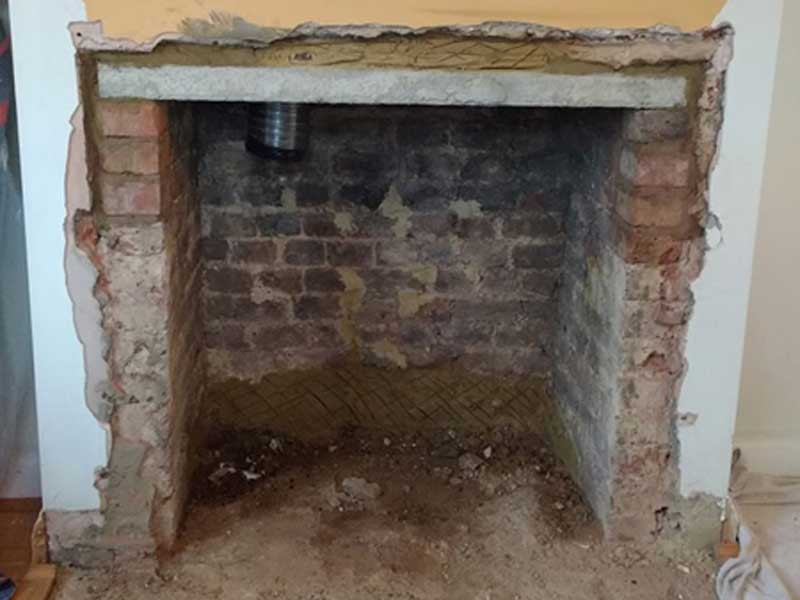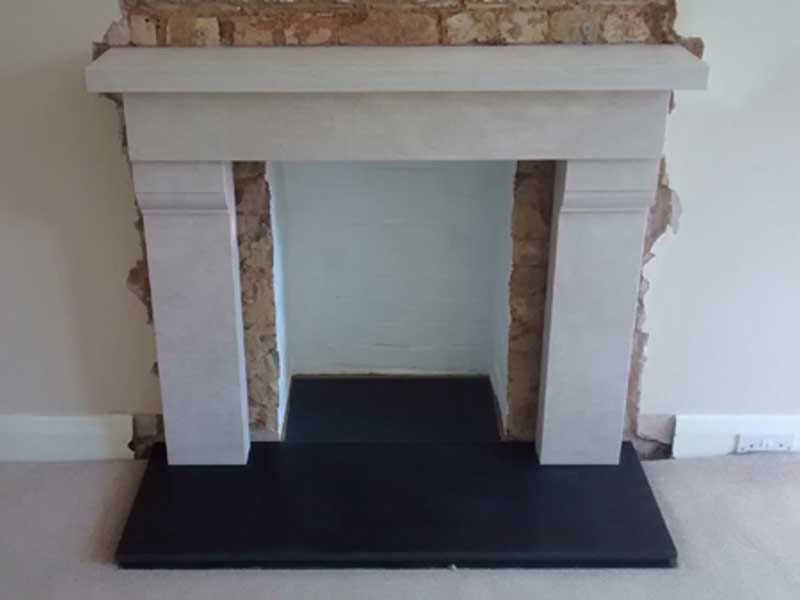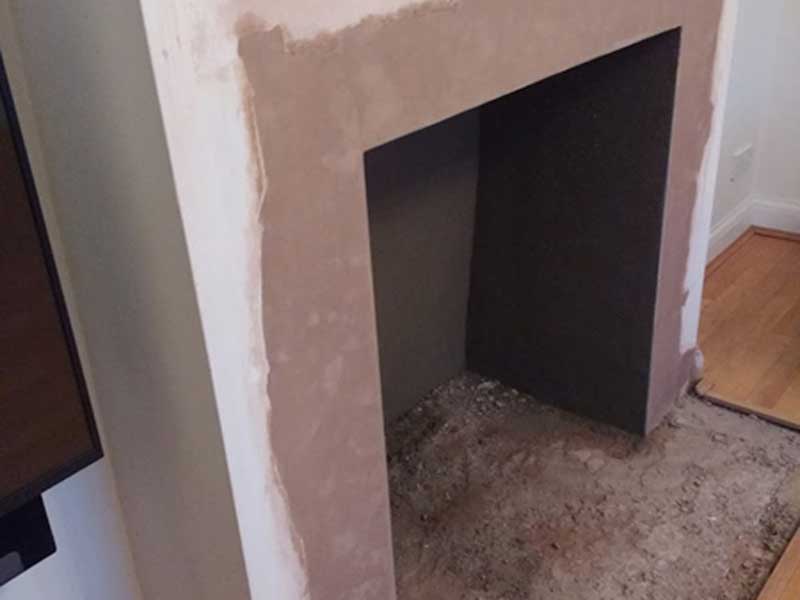Gallery - Stove installation
Here is a selection of completed work from Ansell Chimneys.






Stove installation
Should you be thinking of installing a solid fuel stove and you happen to be a bit of a DIY enthusiast, think very carefully before you attempt the installation yourself. A poorly fitted solid fuel stove could prove to be a deadly addition to your home. For what it costs to have the job done correctly and for the safety of you and your family, we always suggest you have a professional carry out the installation.
Below are the various considerations and stages to an installation, the list is quite comprehensive, so the skills of a professional installer should not be cast aside to try and save a few pounds.
Remember that Gas Safe is the governing body for gas installers, likewise HETAS is the governing body for solid fuel installers. All solid fuel installations, including wood burning stoves, have to be signed off by a HETAS registered installer. Although stoves can be installed by non HETAS registered installers, your local building control department of the council will still inspect and certify the works, this will cost around £280. It is also worth remembering that not all building councils will certify such works, so be careful.
Because Ansell Chimneys are HETAS registered installers we are able to self certify and notify your local authority that the works have been completed in a safe and compliant manner without the need for them to inspect the finished installation. Should the installation not be certified by a HETAS registered installer the works are judged to be illegal and many insurance companies will not pay out on claims for fires caused by incorrectly installed solid fuel appliances. Local authorities will robustly fine companies and individuals for illegally installing stoves.
Do you already have an chimney breast?
If you do have an existing chimney breast it will need to be properly swept and lined for a solid fuel stove. Lining the chimney will make the stove operate more efficiently, as the space that needs to be heated up is much smaller if the chimney is lined and it is also far better protection against carbon monoxide gases.
If you do not have a chimney breast a twin wall chimney can be installed internally or externally. These are typically large, bright stainless steel chimney structures. If they are run internally they can be boxed in.
Distances from stove to combustibles
Each stove manufacturer will specify the minimum distance the stove must be away from a combustible material, such as a fireplace mantelpiece, plasterboard or timber stud wall. Prior to installation, the width and height of your fireplace opening must be checked against the technical specifications of the stove.
Distances the chimney to combustibles
Like the specifications above, the stove pipe must also meet minimum distances to combustible materials. A timber mantel is a common design feature but it must be far enough away from the stove pipe.
For internally run twin wall chimney systems there is also a minimum distance to combustible materials, such as a timber floor joist. Good quality flue systems have a distance of 50mm to combustible materials.
What size stove will you require?
You will need to take into account the age of the house, as older and thus less efficient houses will require a higher output to heat the room. It is best to have a smaller stove running at full capacity than a large stove running at lower capacity, as this means you will have greater fuel efficiency and will reduce deposit build up in the flueways. This is simply a rule of thumb, we can advise as to the exact size of solid fuel stove you should have installed for maximum efficiency.
Under the Clean Air Act local authorities may state that the whole or part of their district is a smoke control area. If you live in a smoke control area you cannot burn wood unless you are using a DEFRA exempt appliance. It is a bad idea to spend your money only to discover you cannot use the appliance as it falls foul of these regulations.
Does the stove need a constructional hearth?
If the stove of your choice can push more than 100°C directly downwards then a constructional hearth will be required. A constructional hearth is simply a solid slab of non combustible origin at least 125mm deep and 250mm depth if there are combustible materials underneath the hearth such as floorboards. You may already have a constructional hearth if you have an existing fireplace or a solid floor. It must also project at least 500mm in front of the fireplace opening, as well as 150mm wider each side, and some older hearths may not meet these requirements.
Airwash is vital too!
Airwash is achieved by drawing air across the door to create a barrier between the burning fire and the glass. The air is either drawn directly from outside or some of the better quality stoves have developed a design whereby the air is pre warmed by ducting it around the back and top of the stove before pushing it over the glass. By preheating this air the overall temperature of combustion is increased keeping the door glass cleaner during operation.
Ventilation for your solid fuel stove
Stoves over 5kW output will require some additional ventilation. Some stoves have a device to connect an external air duct directly to the stove, eliminating a cold draught from outside causing a chill in the room.
The type of fuel for your solid fuel stove
You can buy a wood burning only stove or a multi fuel stove that will also burn coal based products. The grate is the main difference in these appliances. The well made stoves today will have a multi grate that allows you to switch between wood and coal, as each burn differently, in one easy operation. Most mutlifuel grates are designed for solid fuel but will burn wood.
So as you can see, there is a lot to consider when installing a solid fuel stove, so please don't cut corners as it could cost you more than a few pounds!
Ansell Chimneys
t. 01923 661 614 | m. 07941 282 325 | m. 07976 318 160 | Email us
t. 01923 661 614
m. 07941 282 325
m. 07976 318 160
Email us
Abbots Langley | Bricket Wood | Bushey | Chorleywood | Croxley Green | Elstree | Hemel Hempstead | Kings Langley | Radlett | Rickmansworth | South Oxhey | Stanmore | St Albans | Watford
Abbots Langley | Bricket Wood | Bushey | Chorleywood
Croxley Green | Elstree | Hemel Hempstead | Kings Langley
Radlett | Rickmansworth | South Oxhey | Stanmore
St Albans | Watford





